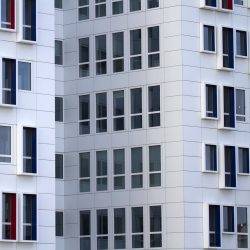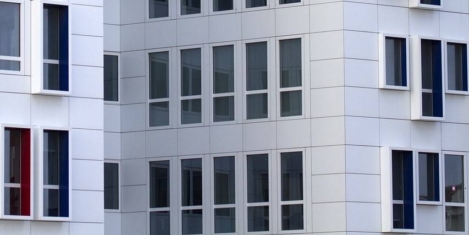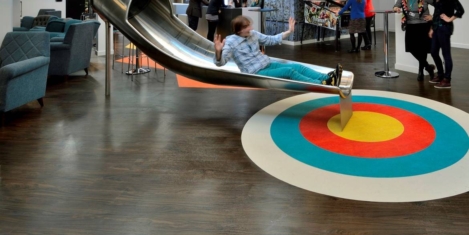January 18, 2019
Employers must take better action to avoid sick building syndrome
 Sick building syndrome is a collective term to describe when occupants of a specific building suffer from a related illness. Problems can either be localised to a specific room or more widespread throughout a building. The symptoms can manifest as headaches, blocked or runny noses, skin irritations, sore eyes or tiredness and difficulties with concentration. A number of building-related factors are linked to the condition with ageing offices and factories acting as magnets for sick building syndrome. Studies have shown that headaches and respiratory problems among office workers were directly related to the use of air conditioning and inadequate ventilation. Room temperature, light and noise, humidity, carbon dioxide, chemical contaminants (volatile organic compounds – VOCs), air quality and naturally occurring poisons can all inflame symptoms for sufferers requiring more precise control over environmental factors in the workplace. Making sure buildings are healthy for their occupants is a challenge. (more…)
Sick building syndrome is a collective term to describe when occupants of a specific building suffer from a related illness. Problems can either be localised to a specific room or more widespread throughout a building. The symptoms can manifest as headaches, blocked or runny noses, skin irritations, sore eyes or tiredness and difficulties with concentration. A number of building-related factors are linked to the condition with ageing offices and factories acting as magnets for sick building syndrome. Studies have shown that headaches and respiratory problems among office workers were directly related to the use of air conditioning and inadequate ventilation. Room temperature, light and noise, humidity, carbon dioxide, chemical contaminants (volatile organic compounds – VOCs), air quality and naturally occurring poisons can all inflame symptoms for sufferers requiring more precise control over environmental factors in the workplace. Making sure buildings are healthy for their occupants is a challenge. (more…)







 New research has found that over 2 million UK workers think about quitting their job every day and this figure was significantly higher amongst younger workers, aged 18-24, with 12 percent of those surveyed stating they think about this daily. The research by CABA, a charity supporting the wellbeing of chartered accountants and their families, also highlighted that 38 percent of employees regularly encountered stressful situations at work. Women were most likely to feel this way, with 41 percent revealing they deal with stressful circumstances at least once a week. Comparatively, only 34 percent of male employees admitted to encountering such situations on at least a weekly basis. Many factors were cited as contributing to employees feeling stressed, including unrealistic expectations and unmanageable workloads. Regardless of how it manifests itself within the working environment it can have a negative impact on employee wellbeing, with over 1 in 10 (12 percent) missing at least 52 family events or personal commitments each year.
New research has found that over 2 million UK workers think about quitting their job every day and this figure was significantly higher amongst younger workers, aged 18-24, with 12 percent of those surveyed stating they think about this daily. The research by CABA, a charity supporting the wellbeing of chartered accountants and their families, also highlighted that 38 percent of employees regularly encountered stressful situations at work. Women were most likely to feel this way, with 41 percent revealing they deal with stressful circumstances at least once a week. Comparatively, only 34 percent of male employees admitted to encountering such situations on at least a weekly basis. Many factors were cited as contributing to employees feeling stressed, including unrealistic expectations and unmanageable workloads. Regardless of how it manifests itself within the working environment it can have a negative impact on employee wellbeing, with over 1 in 10 (12 percent) missing at least 52 family events or personal commitments each year.








 The two most important barriers to working for those in their 50s and early to mid-60s are health and caring; according to the latest analysis from the ONS.
The two most important barriers to working for those in their 50s and early to mid-60s are health and caring; according to the latest analysis from the ONS. 






 Almost half (49 percent) of UK employees admit they speak to colleagues about health concerns before sharing it with a partner or loved one, claims new research by Bupa Health Clinics. Stress, sleep, anxiety and weight problems are among the main concerns being discussed by employees at work, before confiding in those closest to home. The new report found that 46 percent of employees prefer to talk about health with a colleague over a loved one. Many do so with good intentions with more than a third finding it easier to talk to a colleague as they are less likely to worry.
Almost half (49 percent) of UK employees admit they speak to colleagues about health concerns before sharing it with a partner or loved one, claims new research by Bupa Health Clinics. Stress, sleep, anxiety and weight problems are among the main concerns being discussed by employees at work, before confiding in those closest to home. The new report found that 46 percent of employees prefer to talk about health with a colleague over a loved one. Many do so with good intentions with more than a third finding it easier to talk to a colleague as they are less likely to worry.








January 9, 2019
Digital transformation and an uncharted future for workplace design in 2019
by Cherie Johnson and Julie Yonehara • Comment, Technology, Workplace design